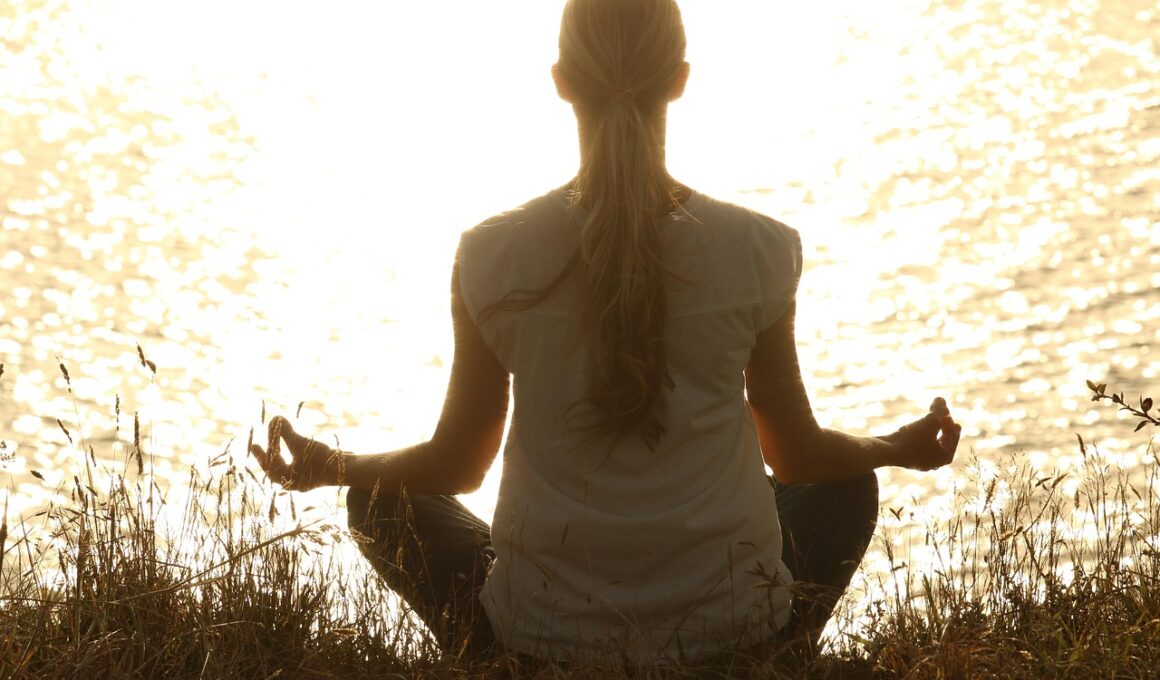Combining Restorative Yoga and Breathwork for Inner Peace
Restorative Yoga is a gentle form of yoga designed to relax and rejuvenate the body while allowing for deep, restorative healing. This practice emphasizes long-held poses supported by props, which makes it accessible to practitioners at all levels. Breathwork, also known as pranayama, complements Restorative Yoga by emphasizing breath control as a tool for enhancing relaxation. Both practices help quiet the mind and promote a state of inner harmony. In connecting the two, practitioners can experience significantly enhanced benefits, such as reduced stress and anxiety. Understanding how to combine Restorative Yoga with breathwork techniques can foster a profound sense of stillness within. In this manner, those new to yoga can benefit from these practices, leading to better balance in life. The focus on breath during restorative postures teaches individuals to observe thoughts and feelings without judgment. This encourages emotional release and spiritual growth, paving the way for self-discovery and mindfulness. In this article, we will explore how Restorative Yoga and breathwork intertwine to create a harmonious experience for both body and mind.
Benefits of Restorative Yoga
Many find Restorative Yoga to be incredibly beneficial for various aspects of health and well-being. One core advantage is the ability to reduce overall tension and stress, promoting better sleep and relaxation. By holding poses for extended periods, practitioners allow their bodies to release built-up tension and experience deep relaxation. Equally important is how restorative practices lead to improved flexibility and mobility, particularly for individuals recovering from injury or managing chronic pain. Another evident benefit is the enhancement of mental clarity and emotional stability, as restorative poses encourage participants to connect deeply with their breath. Adequate breath awareness facilitates a reconnection between body and mind. Social connectivity is another significant aspect, as group classes foster a sense of belonging and support. Participants often share their experiences, which enhances emotional well-being. With diligent practice, many discover that their anxiety levels decrease and they are better equipped to manage daily challenges. Additionally, this type of yoga aids in developing mindfulness, which can translate to other areas of life. Practitioners often report a greater sense of peace and a renewed focus on personal health goals after consistent practice.
Breathwork techniques, integral to the practice of Restorative Yoga, enhance individual experiences during meditation. These techniques often include methods such as diaphragmatic breathing, box breathing, and alternate nostril breathing. Diaphragmatic breathing engages the diaphragm fully, allowing oxygen to fill the lungs and promoting oxygenation of the organs. Box breathing, known to regulate breath and calm the nervous system, consists of inhaling for four counts, holding for four counts, exhaling for four counts, and holding again for four counts. Alternate nostril breathing balances the body’s energy while engaging both hemispheres of the brain. Combining these techniques with Restorative Yoga poses can heighten awareness and establish a sense of inner peace. During classes, instructors usually incorporate breath awareness into each movement, encouraging practitioners to synchronize their breathing with the poses. This synchronization fosters mindfulness and relieves tension, allowing individuals to release worries and focus on the present. Additionally, many enjoy the rhythmic aspect of breathwork, allowing them to ease deeper into restorative poses. As participants continue this practice, they may find themselves discovering new depths to their practices and enhancing their overall experience of tranquility and well-being.
Integrating Breathwork with Restorative Yoga
Integrating breathwork within Restorative Yoga practices can significantly amplify relaxation and consciousness. In class settings, instructors often guide students through breathwork exercises prior to entering restorative poses. Early deep breathing sets the tone for a calming atmosphere, promoting a peaceful mindset. During the long-held poses, individuals are encouraged to focus on their breath, letting go of distracting thoughts. This process fosters self-awareness, which is essential for personal growth and healing. When practitioners maintain mindful breathing during stretches, they release deeper layers of tension stored within the body. This method is particularly beneficial in stress management while promoting a quieter mind, free from incessant thoughts. Many practitioners report feeling lighter and more peaceful after sessions, attributing this to breath awareness’ profound impact. Additionally, integrating these techniques can enhance energy flow through the body, encouraging healing on multiple levels. Maintaining consistent practice allows individuals to cultivate discernment—recognizing the mind’s chatter and gently returning focus to the breath. This newfound clarity can transform everyday life, leading to profound inner peace and emotional stability, both on and off the yoga mat.
The practice of Restorative Yoga, combined with breathwork, requires an understanding of personal limits and the necessity for patience. New practitioners might feel discomfort during long-held poses or might be unsure of breath techniques at first. However, with perseverance and gentle guidance, ease can be found. An essential aspect is listening to one’s body; if a specific pose feels uncomfortable, it is pertinent to adjust or utilize props for support. The goal is to promote relaxation without forcing the body into positions that incite stress. Setting an intention for each session enhances the experience, as it offers both direction and purpose. It is done by simply reflecting on personal goals or feelings in a quiet moment before beginning. Participants can then use this intention as a focus throughout their practice, anchoring them during distractions. This inner focus allows for an even deeper recovery while amplifying self-awareness. As practitioners cultivate this approach, they often feel more in tune with their emotions and physical sensations. Consequently, the powerful combination of restorative practices and breathwork encourages compassion towards oneself and fosters a nurturing space for healing and growth.
The Importance of a Calm Environment
A calm environment enhances the practice of Restorative Yoga and breathwork, providing a sanctuary for relaxation. Practitioners are encouraged to create a soothing atmosphere that promotes peacefulness and tranquility. This can be achieved by dimming lights, incorporating calming scents, and playing gentle music. Many yogis find that enhancing their space with essential oils, such as lavender or chamomile, creates an inviting atmosphere ideal for relaxation. The use of plants can also incorporate a sense of nature, bolstering feelings of grounding. Silence interspersed with soft instrumental music can facilitate a calming soundscape, supporting a tranquil setting conducive to inner peace. Moreover, the ideal environment aids concentration, diminishing distractions and enabling practitioners to focus solely on their breath and poses. This intentional space cultivates a mindset of calm and provides a backdrop for profound relaxation, allowing individuals to detach from daily stressors. Engaging in Restorative Yoga amidst a serene atmosphere requires conscious effort yet significantly enhances the practice. Such environments encourage followers to delve deep into self-exploration, leading to better emotional and physical balance as they navigate life’s ups and downs.
Ultimately, the journey of combining Restorative Yoga with breathwork is about discovering one’s authentic self. The key lies in consistency of practice; building a connection with the self enables better understanding of emotional patterns over time. As practitioners engage with their breath and flow through restorative poses, they uncover layers of built-up stress, tension, and emotional baggage that require gentle release. This process can be transformative, leading to a more harmonious relationship with oneself. Through your journey, allow yourself to cultivate patience and forgiveness as healing unfolds. The importance of self-compassion cannot be overstated. This emotional nurturing leads to holistic wellness, informing various aspects of life. Participants become more resilient in managing external stressors and ultimately feel empowered to embrace their path. As practitioners uplift their emotional and mental states, they often inspire those around them to prioritize their well-being. Sharing experiences may lead to community growth, encouraging others to explore the benefits of Restorative Yoga and breathwork. The winding path of yoga and meditation offers everyone the opportunity to flourish in self-discovery and cultivate lasting inner peace.


